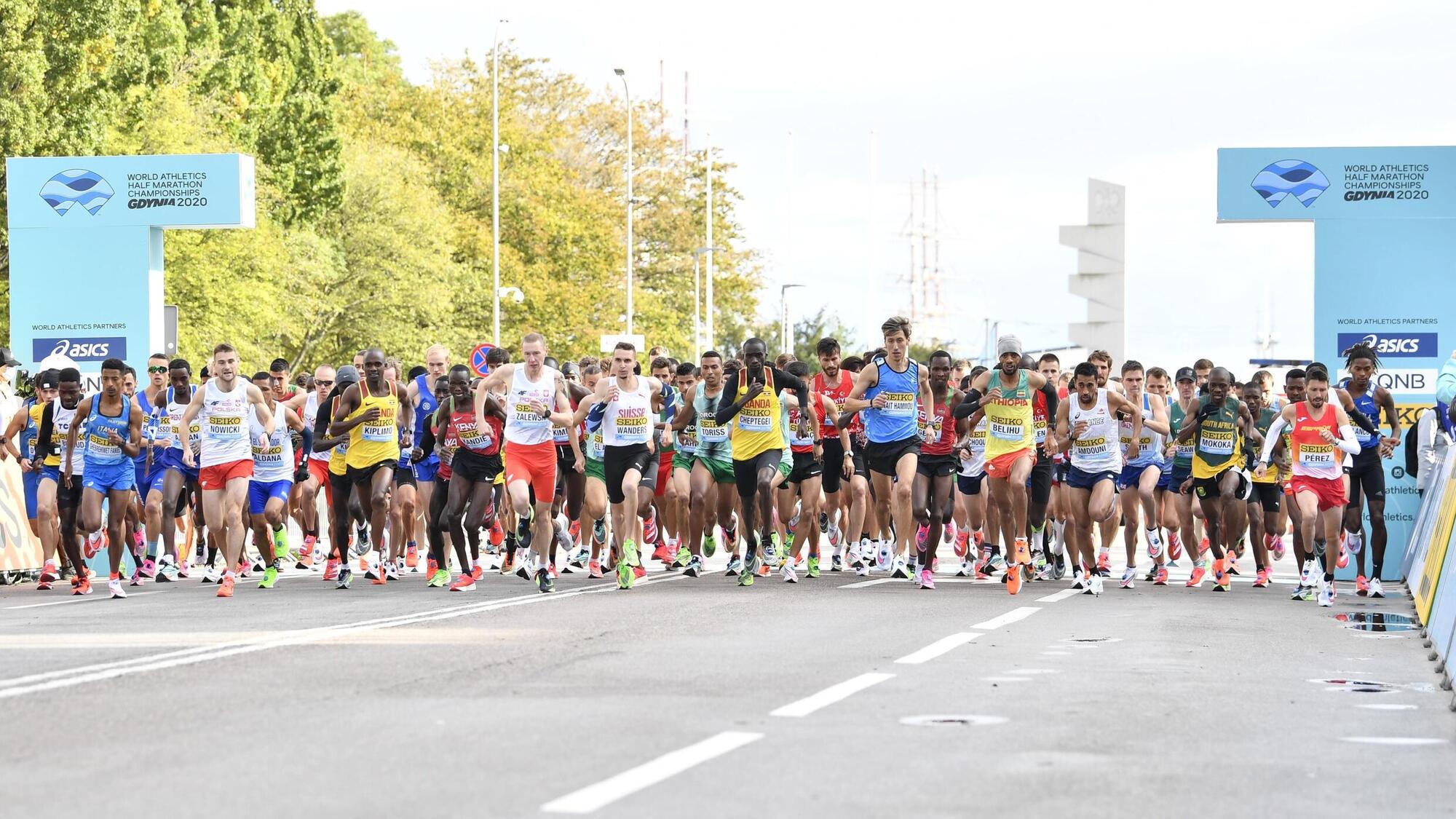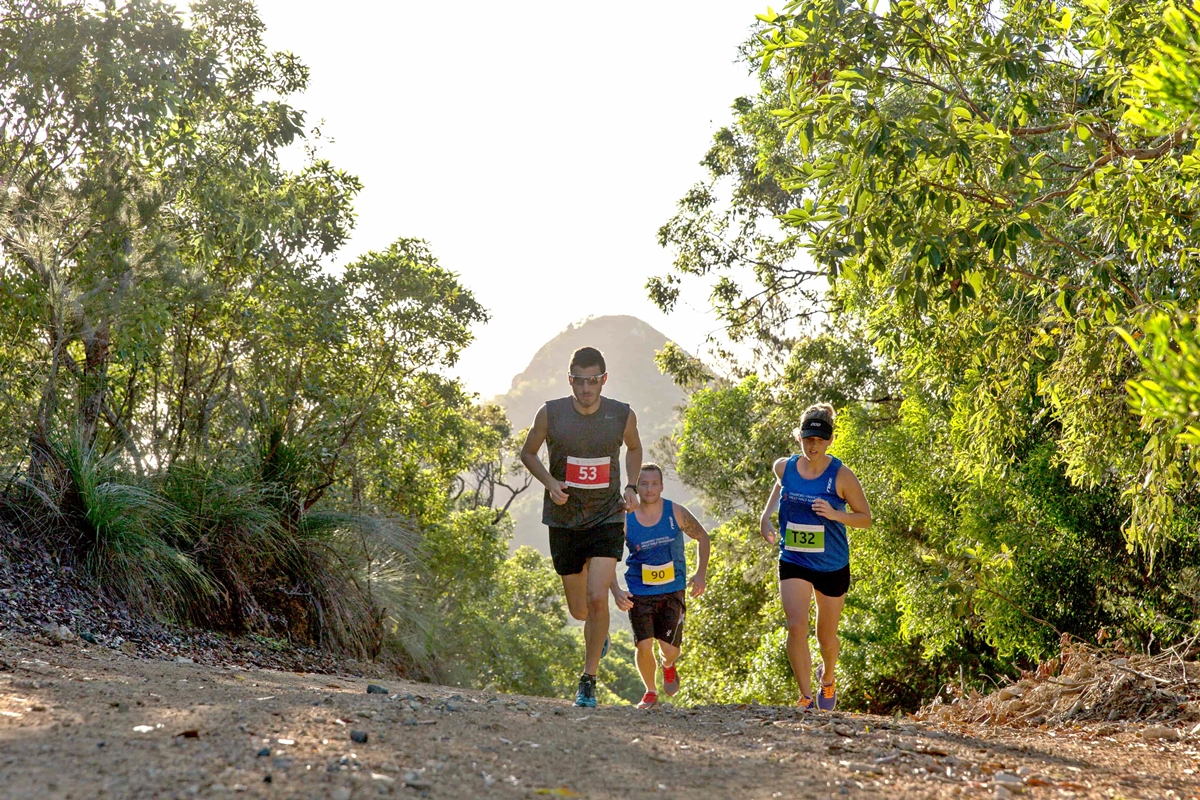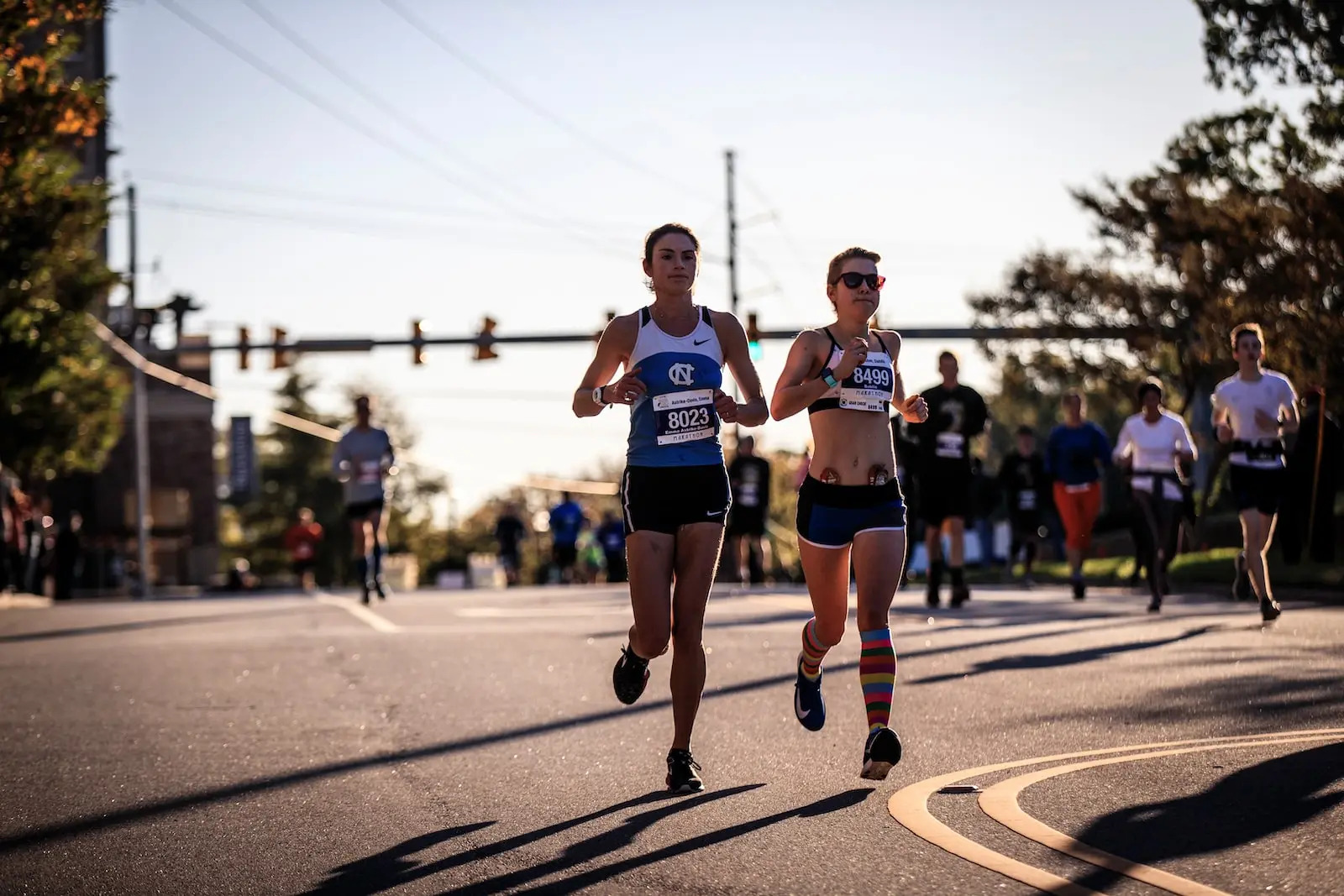

Featured
How Long A Marathon Should Be?
Modified: January 22, 2024
Learn how long a marathon should be and get featured tips on setting the distance for this challenging race. Embark on your running journey with confidence!
Introduction
The marathon, a grueling long-distance race known for testing the limits of human endurance, has been an integral part of the sporting world for centuries. Athletes from around the globe push themselves to the brink of exhaustion, striving to complete the 26.2-mile distance and etch their names in marathon history.
But have you ever wondered why a marathon is exactly 26.2 miles long? What factors influenced the establishment of this challenging distance? In this article, we will delve into the historical background of marathons and explore the fascinating journey that led to the standardization of the marathon distance.
Marathons trace their origins back to ancient Greece, where legendary accounts tell of a messenger named Pheidippides who died after running from the battle of Marathon to Athens to deliver the news of victory. Inspired by this tale, modern-day marathons have become a symbol of determination, stamina, and the indomitable human spirit.
While the concept of a marathon has remained relatively consistent over the years, the actual distance has undergone numerous changes and debates. Understanding the factors that influenced the establishment of the marathon distance can shed light on the history and significance of this iconic race.
Throughout this article, we will explore pivotal moments in marathon history, including the 1908 Olympics, which played a crucial role in shaping the modern marathon. We will also investigate the efforts to standardize the marathon distance on both Olympic and international levels.
Additionally, we will delve into the controversies surrounding the marathon distance, such as alternative race lengths proposed by various organizations. By examining these developments, we can gain a comprehensive understanding of why a marathon is precisely 26.2 miles long.
So, let’s embark on this journey through time and unravel the captivating story behind the marathon distance. Get ready to dive into the historical background, standards, controversies, and the enduring allure of one of the world’s most iconic races.
Historical Background
The origins of the marathon can be traced back to ancient Greece, where running held a significant place in their culture. One of the most famous accounts comes from the Battle of Marathon in 490 BC. Legend has it that a messenger named Pheidippides was sent from the town of Marathon to Athens to announce the Greeks’ victory over the Persians.
According to the story, Pheidippides ran the entire distance without stopping to deliver the news, but upon reaching Athens, he collapsed and died from exertion. This heroic act inspired the creation of the marathon race, which would later become an integral part of the Olympic Games.
Fast forward to the late 19th century, and marathon races started gaining popularity. The Marathon Bridge Run, a 40-kilometer race, took place in France in the late 1800s. This event marked the first marathon race in the modern sense, attracting runners from various parts of Europe.
The turning point for the marathon came in 1908, during the London Olympics. The race was originally intended to be 25 miles, modeled after the 24.85-mile route between the English town of Windsor and the Olympic Stadium in London. However, due to the desire to have the race start from Windsor Castle and finish in front of the royal box at the Olympic Stadium, an additional 385 yards were added.
This distance alteration resulted in a marathon length of 26.2 miles or 42.195 kilometers, which became the official standard for marathon races moving forward. The London Marathon has since used this distance for its annual race, cementing 26.2 miles as the iconic marathon distance.
It is important to note that the marathon distance was not immediately embraced as the universal standard. In fact, it wasn’t until the 1908 Olympics that the 26.2-mile distance gained widespread recognition. Prior to this, marathon races varied in distance, ranging from 25 to 28 miles depending on the event and location.
The establishment of the 26.2-mile distance in 1908 paved the way for the marathon to become an official event in the Olympic Games and solidified its place as the ultimate endurance race. Since then, the marathon has captivated athletes and spectators alike, with countless individuals pushing their bodies to the limit in pursuit of this monumental achievement.
Now that we have explored the historical background of the marathon, let’s delve deeper into the standardization of the marathon distance.
The 1908 Olympics and the Birth of the Modern Marathon
The year 1908 marked a significant turning point in the history of the marathon, thanks to the London Olympics. This event not only showcased remarkable athletic performances but also gave birth to the modern marathon as we know it today.
The marathon race in the 1908 Olympics was initially scheduled to be 25 miles, following the 24.85-mile distance from Windsor to the Olympic Stadium in London. However, due to the desire to incorporate a royal connection into the race, the course was altered.
The race began at Windsor Castle, the residence of the royal family, and the finish line was moved to the Olympic Stadium, where the royal box was located. To accommodate this change, an additional 385 yards were added, extending the race distance to 26.2 miles.
The alteration of the course presented a thrilling and challenging endeavor for the athletes. The race took place on a rainy and muddy day, making the already demanding marathon even more grueling. The route included hilly terrains and uneven surfaces, putting the endurance and resilience of the runners to the ultimate test.
Athletes from around the world, including Italy, South Africa, and the United States, participated in the race. The marathon soon became a dramatic spectacle, filled with unexpected twists and turns.
One of the most memorable moments of the 1908 Olympic marathon was when the Italian runner, Dorando Pietri, entered the stadium in first place. However, he was visibly exhausted and disoriented due to battling extreme exhaustion throughout the race.
As Pietri staggered towards the finish line, he collapsed multiple times, only to rise again and continue his perilous journey. Spectators and officials rushed to assist him, but due to the rules at the time, they were not allowed to physically support him.
Eventually, Pietri managed to cross the finish line, but he was disqualified because he had received aid from others during his final moments. The disqualification did not dampen the spirit of the Italian runner, who had captured the hearts of millions with his extraordinary display of determination and courage.
The dramatic events of the 1908 Olympic marathon captured the attention and imagination of people worldwide. This iconic race, filled with both triumph and adversity, solidified the 26.2-mile distance as the epic challenge that continues to inspire athletes to this day.
The London Olympics of 1908 played a pivotal role in shaping the modern marathon. The extended distance of 26.2 miles became the standard for future marathon races, highlighting the endurance, perseverance, and unwavering spirit required to conquer this ultimate athletic feat.
With the birth of the modern marathon at the 1908 Olympics, the event gained even greater prominence, attracting a growing number of participants and spectators fascinated by the physical and mental fortitude demonstrated by marathon runners.
Now that we have explored the significance of the 1908 Olympics in the development of the marathon, let’s delve into the standardization of the marathon distance on both Olympic and international levels.
Standardization of the Marathon Distance
After the 1908 Olympics, where the marathon distance was set at 26.2 miles, efforts were made to establish a standardized distance for marathon races. This was crucial to ensure consistency and fairness in future competitions.
The International Association of Athletics Federations (IAAF), the governing body for track and field events, played a significant role in the standardization process. In 1921, the IAAF officially adopted the 26.2-mile distance as the standard marathon length.
Standardizing the marathon distance was vital for several reasons. Firstly, it allowed for fair competition and equal opportunities for athletes from different regions. By having a consistent distance, athletes could compare their times and performances more accurately.
Secondly, having a standardized distance facilitated record-keeping and the establishment of official world records. It enabled meaningful comparisons between different marathon races and enabled athletes to strive for new milestones.
Thirdly, standardization helped with logistical planning and race organization. Since marathon courses need to be carefully planned, knowing the exact distance meant that organizers could design routes more efficiently and ensure that they met the required specifications.
Over the years, the IAAF has continued to oversee and regulate marathon races worldwide, ensuring that they adhere to the established standards. The association has also implemented strict rules and guidelines to maintain the integrity and credibility of the sport.
The adoption of the 26.2-mile distance as the official marathon length by the IAAF had a significant impact on the growth and popularity of marathon racing. It encouraged more individuals to participate in marathons, knowing that they were completing the same distance as elite athletes.
Furthermore, the standardization of the marathon distance also had implications for the organization of major international events, such as the Olympics and World Championships. It provided a consistent framework for these prestigious competitions and allowed for fair and equal competition among athletes from various nations.
Today, marathons are held all around the globe, attracting thousands of participants and spectators. The standardized distance of 26.2 miles has become synonymous with the ultimate endurance challenge, representing the pinnacle of physical and mental stamina.
The standardization of the marathon distance has undoubtedly contributed to the growth and global appeal of the sport. It has allowed athletes to push their limits, set new records, and inspire others to take on the remarkable feat of completing a marathon.
Now, let’s explore the factors that have influenced the marathon distance and how they have shaped the sport.
Factors Affecting Marathon Distance
The establishment of the 26.2-mile marathon distance was influenced by various factors that shaped the sport over time. These factors include historical events, geographical considerations, race organization, and the pursuit of new challenges.
Historical events, such as the 1908 Olympics, played a crucial role in determining the marathon distance. The decision to extend the race by 385 yards to accommodate the finish line in front of the royal box influenced the standardization of the marathon at 26.2 miles. This alteration in the course not only provided a thrilling race experience but also set the stage for future marathon events.
Geographical considerations also played a part in determining the marathon distance. Many early marathon races sought to replicate the distance of the original route from Marathon to Athens. However, exact measurements and definitions of distances varied. As a result, marathon races were not consistent, with distances ranging from 25 to 28 miles prior to standardization.
Race organization and logistics also influenced the marathon distance. When planning a marathon course, organizers had to consider factors such as starting and finishing locations, terrain, scenic routes, and spectator accessibility. The desire for a visually pleasing course while maintaining the integrity of the race often led to slight adjustments in the distance.
Addtionally, the pursuit of new challenges and breaking records motivated athletes and organizers to experiment with alternative distances. Ultra marathons, which exceed the traditional 26.2-mile distance, have gained popularity among runners seeking to test their limits. Races like the Comrades Marathon in South Africa and the Spartathlon in Greece have become synonymous with extraordinary feats of endurance.
While the marathon distance has been standardized at 26.2 miles for official races, these alternative distances showcase the diversity and boundless nature of the sport. They provide a platform for athletes to push beyond traditional boundaries and explore new realms of physical and mental achievement.
In recent years, there have been discussions about the possibility of adjusting the marathon distance to better align with metric measurements. Some propose rounding the distance to 42.195 kilometers, which is the exact conversion of 26.2 miles. This adjustment aims to simplify race planning and facilitate international comparisons of marathon performances.
However, any potential changes to the marathon distance would require careful consideration and consultation with stakeholders, including athletes, organizers, and governing bodies. It is important to balance the desire for uniformity with the historical significance and tradition associated with the existing distance.
To this day, the marathon remains a symbol of human achievement and the pursuit of exceptional physical and mental fortitude. Whether it is the traditional 26.2-mile distance or alternative ultra-marathons, the factors influencing the marathon distance continue to shape the sport and inspire runners around the world.
Now, let’s explore the standards and guidelines set for marathon races on Olympic and international levels.
Olympic and International Standards
The establishment of standards and guidelines for marathon races on Olympic and international levels is crucial to ensure fair competition and maintain the integrity of the sport. These standards encompass a range of factors, including the course, timing, doping regulations, and eligibility requirements for athletes.
On the Olympic level, the International Olympic Committee (IOC) sets forth regulations for marathon races. The course must be accurately measured and certified to meet the official 42.195-kilometer (26.2-mile) distance. It should also be marked clearly with mile or kilometer markers for the guidance of both participants and spectators.
In addition, strict timing protocols are followed during Olympic marathons. Electronic timing systems and official timekeepers are employed to ensure accurate timing and enable precise recording of athletes’ finishing times. This not only determines the winner of the event but also allows for the comparison of performances against previous Olympic records.
The IOC also employs stringent anti-doping measures to safeguard the integrity of Olympic marathons. Athletes are subject to pre-competition and in-competition testing for banned substances. These measures aim to ensure a level playing field and maintain the spirit of fair competition.
International standards for marathon races are set by the International Association of Athletics Federations (IAAF). The IAAF establishes guidelines and regulations that govern marathon events worldwide, including both professional races and mass participation events.
One of the key aspects of the IAAF standards is course measurement. Marathon courses must be measured using calibrated devices to ensure accuracy and consistency. The measurement process involves accounting for tangents, taking into consideration the shortest possible route along the course.
The IAAF also sets eligibility requirements for participation in international marathon events. Athletes must meet certain criteria, including age limits, nationality, and qualification standards outlined by the IAAF. These requirements help maintain the competitive nature of international marathons and ensure that only the most qualified athletes participate.
Furthermore, the IAAF provides guidelines for race organizers on various aspects of marathon events, such as starting procedures, water stations, medical facilities, and course layout. These guidelines aim to ensure the safety and well-being of participants while maintaining fairness and consistency across different races.
Both Olympic and international standards serve as a benchmark for marathon races worldwide. They provide a framework that organizers can follow to deliver high-quality and standardized events. These standards also enable athletes to compare their performances and compete on an international level, as their results can be recognized and acknowledged globally.
The adherence to these standards not only ensures fair and competitive marathon races but also upholds the credibility and reputation of the sport. Athletes and spectators can have confidence in the accuracy of race results and the legitimacy of athletes’ achievements, which ultimately contributes to the continued growth and global appeal of the marathon.
Now that we have explored the Olympic and international standards for marathon races, let’s address the controversies and alternative distances that have emerged over the years.
Controversies and Alternative Distances
Over the years, the marathon distance has not been immune to controversies and discussions surrounding alternative distances. These debates have led to various proposals for alternative race lengths and sparked conversations among athletes, organizers, and running enthusiasts.
One of the controversies surrounding the marathon distance is the desire to simplify the measurements by using a round metric number. Currently, the marathon distance is officially recognized as 42.195 kilometers, which is the exact conversion of 26.2 miles. However, some argue that rounding the distance to a whole number, such as 42 kilometers, would align with metric measurements and make race planning and record-keeping more straightforward.
Another controversial aspect is the inclusion of ultra-marathons, which exceed the traditional 26.2-mile distance. Ultra-marathons, such as the famous 50-kilometer races, 100-kilometer races, and even multi-day races, have gained popularity among endurance athletes seeking new challenges. Supporters argue that these longer distances push human limits and provide a unique opportunity for athletes to test their physical and mental fortitude.
One proposed alternative distance is the 50-kilometer marathon, which has gained recognition as an official race distance. The IAAF has acknowledged this distance, and international competitions are organized specifically for the 50-kilometer race. This distance appeals to runners who desire a longer challenge but do not want to venture into ultra-marathon territory.
Additionally, unique marathon events have emerged, such as the midnight marathon, trail marathons, and themed marathons. These variations on the traditional distance offer a different experience for runners and attract participants with specific interests and preferences.
Despite these alternative distances and events, the 26.2-mile marathon remains the most recognized and prestigious distance. It holds a special place in the hearts of many runners who aspire to complete the iconic distance and join the ranks of marathon finishers.
Controversies and alternative distances add to the diversity and ongoing evolution of the marathon. They provide opportunities for athletes to explore new challenges, test their limits, and showcase their skills in different race formats. However, it is important to strike a balance between embracing alternative distances and preserving the historical significance and tradition associated with the 26.2-mile marathon distance.
Ultimately, whether runners choose to participate in a traditional marathon, an ultra-marathon, or another alternative distance, what matters most is the personal sense of accomplishment and the fulfillment of a goal. Whatever the distance, the marathon continues to inspire individuals to push their boundaries, embrace challenges, and celebrate the indomitable human spirit.
Now, let’s conclude our exploration of the marathon distance and its enduring allure.
Conclusion
The marathon distance, set at 26.2 miles, has become an iconic symbol of human achievement, resilience, and determination. From its roots in ancient Greece to the standardization process fueled by historical events and international governing bodies, the marathon has captivated runners and inspired countless individuals around the world.
The historical background of the marathon provides us with a rich tapestry of stories and legends that have shaped the sport. The 1908 Olympics marked a turning point, giving birth to the modern marathon and establishing the 26.2-mile distance that would become the standard.
Standardization of the marathon distance at 26.2 miles has brought consistency, fairness, and comparability to marathon races worldwide. This standardization, overseen by organizations like the International Olympic Committee and the International Association of Athletics Federations, ensures that athletes can compete on equal footing and their achievements can be universally recognized.
Despite controversies and discussions surrounding alternative distances, such as ultra-marathons or the possibility of rounding the distance to 42 kilometers, the traditional marathon distance remains the pinnacle of the sport. Runners from all walks of life aspire to complete a marathon, pushing their limits and experiencing the incredible physical and mental journey that the race entails.
Marathons have also evolved beyond their traditional form, with unique variations and themed events providing different experiences for runners. These alternatives have added diversity to the sport and cater to the varied interests and goals of participants.
In the end, what truly matters is the personal journey and accomplishment that the marathon represents. Whether it’s completing a marathon, conquering an ultra-marathon, or participating in a themed race, each runner embarks on a transformative experience, pushing their limits and reveling in their triumph.
The marathon has transcended time and boundaries, inspiring millions of people to pursue their dreams, overcome challenges, and believe in the power of human resolve. It is a testament to the indomitable spirit of individuals who strive to surpass their own expectations and achieve something extraordinary.
So, whether you’re a seasoned marathon veteran or a dreamer preparing for your first marathon, embrace the journey, relish the training, and revel in the incredible achievement of completing the enduring and mythical distance of 26.2 miles.









